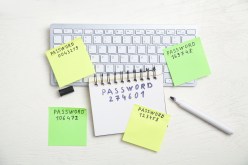How Hackers Easily Crack Simple Passwords Like ‘Password 1’
Passwords are our first line of defense when it comes to protecting our personal and professional online accounts. However, many people still use simple passwords like “password 1” which can put their sensitive information at risk. In fact, hackers can easily crack passwords like this with little effort. Here’s how:
The Problem with Simple Passwords
Using simple passwords like “password 1” is a big problem because they are easy for hackers to guess or crack. When a hacker attempts to break into an account, they will often use automated tools that can generate millions of password combinations in seconds. If your password is a common phrase or word, it will likely be one of the first ones the hacker tries.
How Hackers Crack Passwords
One of the most common ways that hackers crack passwords is through brute force attacks. This means that they try every possible combination until they find the correct one. For example, if your password is “password 1”, the hacker will start with “a”, then “b”, then “c”, and so on until they reach “password 1”. This process can take some time, but it’s relatively easy for an experienced hacker.
Another way that hackers can crack passwords is through dictionary attacks. These attacks use a list of common words and phrases as potential passwords. If your password is on this list, it will likely be cracked quickly.
How to Create Strong Passwords
To protect yourself from hackers, it’s important to create strong and unique passwords for each account you have. A strong password should contain a mix of upper and lowercase letters, numbers, and special characters like .@#$%^&*. It should also be at least eight characters long.
To make creating strong passwords easier, you can use a passphrase instead of a single word or phrase. A passphrase is a combination of multiple words that are easy for you to remember but difficult for others to guess. For example, “correct horse battery staple” is a strong passphrase.
Additional Tips for Password Security
In addition to creating strong passwords, there are other steps you can take to protect your accounts. First, enable two-factor authentication wherever possible. This adds an extra layer of security by requiring you to enter a code sent to your phone or email in addition to your password.
Second, avoid using the same password for multiple accounts. If one account is compromised, all of your other accounts with the same password will also be at risk.
Finally, consider using a password manager like LastPass or 1Password. These tools can generate and store complex passwords for you, making it easier to keep track of them without using simple passwords like “password 1”.
In conclusion, using simple passwords like “password 1” puts your personal and professional information at risk. By creating strong and unique passwords for each account and taking additional security measures like two-factor authentication and password managers, you can better protect yourself from hackers.
This text was generated using a large language model, and select text has been reviewed and moderated for purposes such as readability.





